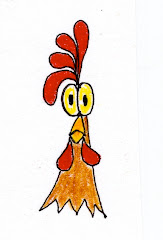A couple of blogs back, I told you about Aroostook county, Maine (where my family roots run deep), and harvesting potatoes. My cousin Billy, who is from up there, sent me the following speech which was recently delivered at a Slow Food conference in Italy by Aroostook potato farmer Jim Gerritsen.
Jim Gerritsen and his family operate Wood Prairie Farm, a successful small-scale organic operation just down the road from my Aunt Irene in the town of Bridgewater.
Mr. Gerritsen strikes me as a very intelligent man. He not only knows how to grow good potatoes, and make a living at it, but clearly understands the history, the current status and the serious problems currently facing agriculture in America. This is evident in the following speech which I recommend to you.
Anyone who aspires to make all or part of his living in small-scale agriculture can learn a lot from Jim Gerritsen’s perspective and his example, which includes internet and mail order marketing of his farm’s products.
(Thanks cousin Billy for sending this my way!)
==========
Good morning. I'm Jim Gerritsen. We have a family farm and raise organic Certified Seed potatoes in the State of Maine in the United States.
I'd like to thank the folks at Slow Food and our hosts here in Italy for the opportunity they have created in bringing together this wonderful group of farmers and producers.
Let me tell you a little about our corner of the world. Wood Prairie Farm is located in Aroostook County, the northernmost county in Maine. Maine's biggest farm crops are potatoes followed by milk, eggs, and blueberries. Maine has the second highest ratio of organic farms to conventional farms in the United States.
Aroostook County’s history has been heavily influenced by two factors: potatoes and its isolation from populated southern New England by a couple of hundred miles of forested wilderness.
In the early 1800s the first white settlers to Aroostook County started carving fields out of the forest and immediately began planting potatoes. What they found was that unlike the marginal soils covering most of New England, the geologically distinct well-drained fertile loam soils of Aroostook along with the cool northern climate were perfect for growing potatoes. Over the next one hundred years farmers made steady and massive efforts to clear the trees from hundreds of thousands of acres in order to grow potatoes.
The big revolution occurred when the railroad arrived in Aroostook County in the late 1800s. With good soil, climate, transportation, 40 inches of annual precipitation, and relative proximity to East Coast population centers, Maine's Potato Empire was created in Aroostook County. Through the early 1950s Maine’s annual crop of almost a quarter million acres made Aroostook County the leader in United States potato production.
In the last fifty years Maine's Potato Empire has seriously waned. Among the factors:
*Shifting consumer preferences away from fresh potatoes and home cooked meals to factory processed foods such as frozen french fries and potato chips.
*Successful standardizing marketing campaigns that convinced recent generations of American consumers that an “Idaho Russet” is the only potato worth eating.
*Competition from producers in the American West who benefit from federally-subsidized irrigation and hydroelectric projects
*The transformation of the traditional potato to a generic commodity with a capital intensive / highly mechanized / increasingly concentrated system of large scale factory-like production.
*And finally, decade after decade of low farm gate prices.
While Aroostook County still produces more potatoes than any other county in the United States, our production is now just a quarter of its peak.
Despite this steady decline, Aroostook County still has a potato-based culture much as it has had for the last 150 years. Going back may generations everyone in Aroostook has worked in the fields picking potatoes. Many former farmers and non-farmers schedule vacation time so they can help family harvest their potato crop. We are one of the last areas in the United States where schools are still closed for Harvest Break so that kids can help farmers get their crop in. Often the teenagers that we hire are taught potato picking technique by their parents and grandparents who they themselves learned when they were young pickers. In our potato culture there is universal belief that hard work and thrift are best learned at an early age by working in a potato field. This is an endangered tradition as increased potato mechanization reduces opportunities for both hand work and younger workers.
Now, a little about Wood Prairie Farm. We have been farming organically for 30 years. We own 110 acres. Like most Maine farms, half of our acreage is in forest. We farm 55 acres, including 48 acres in rotated crop production. We have a 4-year rotation: Year 1: Potatoes; Year 2: Spring Wheat or Oats underplanted with Clover and Timothy grass. The clover sod from Year 3 is plowed down in Year 4 and the field is then planted first to plowdown Buckwheat, then to plowdown Rapeseed as a biofumigant. Year 5 is back to potatoes. Our rotation allows us ten to twelve acres of potatoes a year. We also grow lesser amounts of other root crops like carrots, beets, parsnips and onions. We plant in May, harvest by early October and ship from underground storage until June.
We sell seed potatoes certified as seed by the State of Maine to home and market gardeners across the US through a mailorder catalog and website. We also wholesale to mailorder seedhouses who sell our organic seed potatoes in their catalogs.
In my remaining minutes I’d like to talk about the question of scale in agriculture. Within the Maine organic community our ten acres of potato production would be considered average. However it is very small compared to the 200-700 even 2500 acre potato crops of our non-organic neighbors. Yet the size of the thousands of farms back in Aroostook’s golden age were also small by comparison to today. Clearly, as average farm size increases there is an even greater decrease in the number of farmers remaining. Fifty years ago our four mile long stretch of road had thirty potato farms. Twenty years later our entire town was down to thirty potato farms. Today there are just six potato farmers left in town. One economist has projected that if current trends continue Maine’s 60,000 acres of potatoes will one day be grown by just twenty farmers each growing 3000 acres.
This upward trend in scale is similar across American agriculture. Two factors contributing to this trend are the short-sighted acceptance of genetically modified (GMO) crops by American farmers and the unrelenting rise of American corporate consolidation and domination, first within the US economy and now within the national government.
Historically, it is worth noting that subsequent to the Populist Movement of the late 1800s, the American farm economist Carl Wilkin in the 1930s concluded through his work developing the economic model known as Farm Parity that restrictions upon the size of large farms was necessary in order to ensure proper functioning of the economy, economic justice for farmers and broad benefits to the whole of society. Thirty years ago American writer and farmer Wendell Berry published his landmark work The Unsettling of America which expressed serious reservations to this then unquestioned trend within American agriculture of hyper growth, mechanization and consolidation.
The harvest we are now reaping from this modern scale is liquidated family farmers, crushed rural communities , an unstable food supply and an at risk democracy.
Since its inception, the organic community has been a safe harbor for the American family farmer. However, corporate entry into organic production and marketing is now occurring at a rapid rate and its influence is being felt nationwide. Go into an American chain grocery store today and you will likely find corporate organic vegetables which have been shipped in from thousands of miles away with no local products to be seen. This development is harmful to family scale organic producers due to loss of market opportunity and downward price pressures.
Will organic family farmers succumb to the same forces of scale, consolidation and control that have led to the demise of other family operations? Three reasons for hope come to mind.
*First is the spirit embodied in the Slow Food dialogue of honoring food that is good, clean and fair.
*Second is the developing concept of an “Organic Family Farmer” certification system that identifies family farmers in the marketplace aiding co-producers seeking authentic goods and protecting real family farmers from corporate imitators.
*And third is the dawning on Americans that local is in fact better as reflected in the growth of CSAs (Community Supported Agriculture) and Farmers Markets.
Thank you.
A soft evening
-
If there's one prevailing weather condition we have in our area, it's fog.
Mist. Vapor. Haze. Whatever you want to call it, it's here except in the
summe...
10 hours ago
























































































































2 comments:
Great speech by Mr. Gerritsen. Thanks for publishing it.
Federated states are not for everyone.
Post a Comment